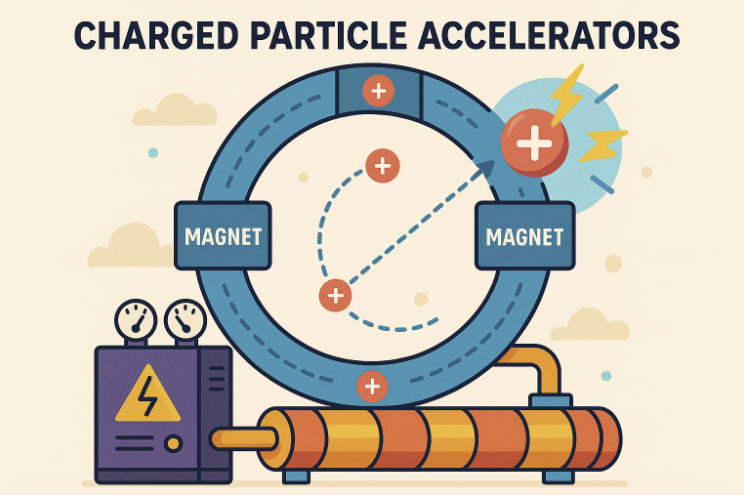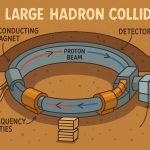Charged particle accelerators are advanced scientific machines that propel charged particles — such as electrons, protons, or ions — to extremely high speeds using electromagnetic fields. These devices are vital in exploring the structure of matter, testing the foundations of physics, advancing medical treatments, and developing cutting-edge technologies. From massive underground colliders to compact cancer treatment units, accelerators are among the most powerful tools in modern science.
How Particle Accelerators Work
At their core, particle accelerators use electric and magnetic fields to increase the kinetic energy of charged particles:
- Electric fields accelerate particles by pushing or pulling them along a path.
- Magnetic fields steer the particles and keep them on a controlled trajectory.
Particles can be accelerated in linear accelerators (linacs), where they move in a straight line, or in circular accelerators, where they travel in a loop (e.g., synchrotrons and cyclotrons).
The faster the particle moves, the more energy it gains. In high-energy physics, this energy is used to smash particles together, revealing new subatomic particles and physical laws.
Types of Accelerators
- Linear Accelerators (Linacs): Accelerate particles in a straight line; often used as injectors for larger machines or in medical devices.
- Cyclotrons: Compact circular accelerators; used in hospitals for producing isotopes and proton therapy.
- Synchrotrons: Large, advanced circular accelerators where particles are accelerated in stages; used in major physics labs.
- Colliders: Special synchrotrons that smash particles into each other, such as the Large Hadron Collider (LHC).
Each type of accelerator is designed for specific research or industrial applications, from discovering the Higgs boson to treating brain tumors.
Applications of Particle Accelerators
While often associated with physics, accelerators have a wide range of practical uses:
- Fundamental research in quantum physics, dark matter, and antimatter.
- Medical therapy, especially in proton beam cancer treatment.
- Industrial inspection and material testing using X-rays from synchrotron radiation.
- Nuclear medicine, where radioisotopes are produced for diagnostics and therapy.
- Security screening, including cargo inspection and airport scanners.
Accelerator technology is also paving the way for next-generation energy systems, space propulsion, and nanotechnology development.
The Future of Accelerators
Next-generation accelerators aim to be:
- More compact using laser-plasma technology or dielectric acceleration;
- More powerful, reaching higher energies to study phenomena like quantum gravity;
- More accessible, allowing hospitals, universities, and smaller labs to benefit.
Ongoing international collaborations — such as CERN, SLAC, and J-PARC — continue to push the boundaries of what we know about the universe.
Glossary
- Charged particle: A particle with an electric charge, like a proton or electron.
- Linear accelerator (linac): A device that accelerates particles along a straight path.
- Cyclotron: A type of circular accelerator that uses magnetic fields to spiral particles outward.
- Synchrotron: A circular accelerator where the magnetic field increases as particles gain energy.
- Higgs boson: A fundamental particle associated with mass, discovered at the LHC.
- Proton therapy: A medical treatment that uses protons to target and destroy cancer cells.


